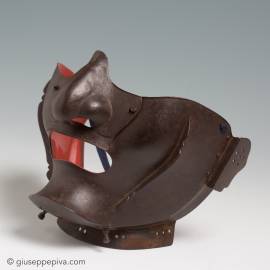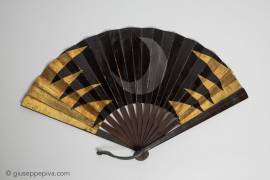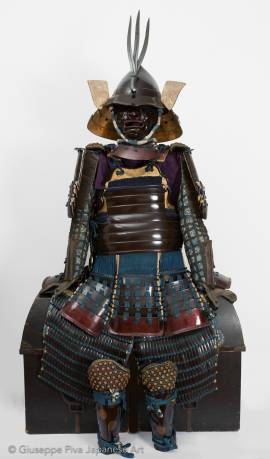Half mask for samurai armorLate Edo period (1615 - 1867)-19th centurySigned: MunechikaMyōchin school The severe expression and the lack of wrinkles denotes the ryubu, or "martial". typology.
WORKS FOR SALE
Fighting fan Mid Edo Period (1615 - 1867), Iron, paper with silver and gold leaf, black pigment, bamboo.Menhari-gata (opening fan), sensu-gata (enlongated shape)Lenght: 32 cm. - Width open: 59 cm.Bearing a Tachiban type mon Iron fan with an elegant shape, with an unusually high number of bamboo ribs.Customarily carried in the hands or tucked in the obi (belt), the folding fan played a significant role in Japanese etiquette, especially on formal occasions, and was rarely ever out of a samurai's possession. Perhaps because it was considered such an ordinary...
Nerikawa Tosei gusokuLeather samurai armor PERIODLate Edo period (1615-1868), 19th century This authentic samurai armor is entirely made of lacquered nerikawa(leather) except for the iron kote. Nerikawa has always been used when building samurai armor in order to diminish its weight, but it is only during the second half of the Edo period that we find full suits made only with this material. Even the helmet, a very nice momonari kabuto decorated with a slander maedate shaped as three bamboo leaves, is made with leather.Both sode are decorated with a large figure of a...
Copyright © 2016 - giuseppe piva - VAT: 05104180962










